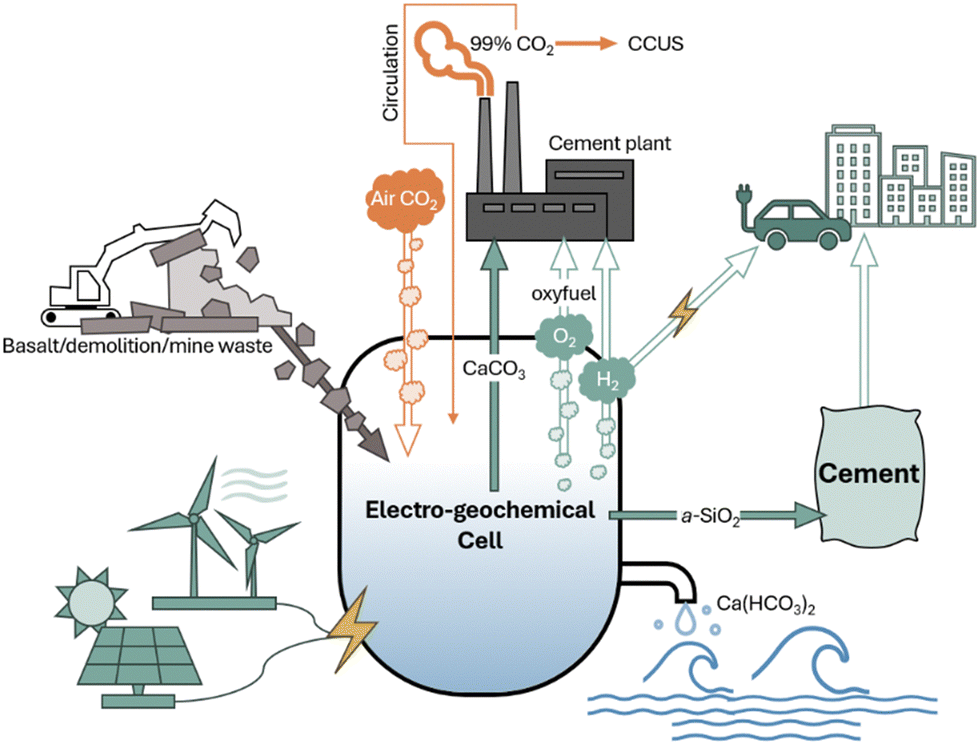
ARTIST Group
Research
Materials
Concrete, the most used material on Earth, just second to water, is used for data centers, bridges, pavement, and buildings. Cement, the glue of concrete, is responsible for 8% of global CO2 emission and 5% of energy use. The ready-mix concrete market alone is 1 trillion dollar per year.
We convert CO2 to CO2-negative cement, enabling circular economy using industry byproducts.
Learn more about our first-of-its-kind electrochemical technology for clean energy and carbon-negative cement in news.

Electrochemical technology for carbon-negative cement
Experimental tools
State-of-the-art experimental tools such as advanced synchrotron-based materials characterization techniques can tackle complicated problems in materials design. Artificial Intelligence (AI) tools are used to aid the data analysis.
Robots can ease the challenges in building and additive manufacturing at scale for automation, such as persistent labor shortage and productivity.
Recent publications using the advanced tools for blended cement & carbon-bearing cement from the first year student and research assistant.

Nanostructure of low-carbon cement

Robotic arm for construction and additive manufacturing
AI-aided modelling
We unveil the environmental impacts and energy use of the infrastructure materials and built environment as well as the economic feasibility and scalability of next-generation manufacturing technologies. Artificial intelligence empowers our data collection, cleaning, and analysis of materials design and characterization, as well as the assessment of environmental impacts.

Environmental impact and economic benefits of various manufacturing scenarios